#platyrrhine
Explore tagged Tumblr posts
Text
hobbies include drawing comparisons and finding reasons
#this is like that#or why is this?#my favourite things to say#the point of life is to be curious and analytical i think#and humorous#the eldar rafted to valinor like platyrrhines to the americas that’s what made me say this
6 notes
·
View notes
Text
Island of the Skull - Map

This is a map I made in the program Wonderdraft that shows my personal take on the archetypal "Skull Island" as seen in various pirate- and adventure-themed media.
Unlike some other variations of the trope, my version is located deep within the equatorial Atlantic Ocean and owes its flora and fauna to migrations over the course of at least 150 million years. The island's most iconic megafauna are the dinosaurs and other descendants of Mesozoic migrants. However, later arrivals have managed to eke out their own niches beneath the giant saurians, including monkeys related to New World platyrrhines, gorillas and chimpanzees, elephants of African forest affinity, pantherine cats of mixed leopard and jaguar heritage, and even phorusrhacid "terror birds".
The island's human inhabitants would have arrived from the West African coast sometime before 2000 BC, bringing with them established traditions of agriculture and ferrous metallurgy that allowed them to colonize the treacherous landscape and carve it into numerous chiefdoms and states over the course of centuries. The most famous of these societies, the so-called "Kingdom of the Skull", developed in the rainforest on the windward side of the volcanic "Mountains of Hell", but fell into ruin at an uncertain date, although local traditions attribute its collapse to provoking the wrath of a deity known as the "Flaming Skull". Nonetheless, the islanders remain numerous across the island's breadth, maintaining a rich variety of distinctive cultures and dozens of different languages, albeit all sharing what may be a distant kinship with the Gbe languages of coastal West Africa.
It was in the late 1400s when Portuguese mariners first chanced upon the Island of the Skull and shared their knowledge with other Europeans. Nonetheless, both the mosasaur-haunted waters encircling the island and its own hostile terrain have discouraged large-scale European colonial expeditions, although some daring buccaneers and corsairs have nonetheless succeeded in establishing commerce with indigenous communities on the coast. Many of these swashbucklers covet the fabled riches of the ancient Kingdom of the Skull, but few who have penetrated its interior have come back to tell the tale…
And here's the (admittedly Google-translated) Portuguese version:
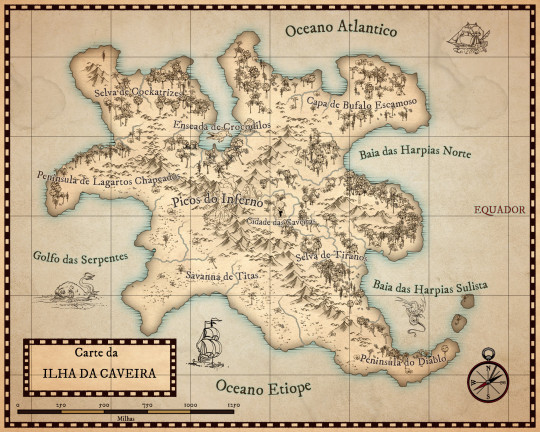
#Skull Island#Island of the Skull#pirate map#adventure#pirates#map#cartography#worldbuilding#lost world#Wonderdraft
11 notes
·
View notes
Text
american journal of biological anthropology / primatology wrapped:
1. cineradiographic analysis of saimiri walking cycle
2. dentition in 4 platyrrhine primates
3. tricolor vision in eulemur idk i forgor the title
4. i forgor
5. i forgor
4 notes
·
View notes
Text
every time i see this post i feel the need to add on that there are more actual words that end in -ine to describe a group of animals Ovine: Sheep Zebrine: Zebra Avine: birds platyrrhine: New world monkeys antilopine: antelopes limicoline: shorebirds porpentine: porcupines (An archaic term because porcupine -> porcupine) smaragdine: emeralds colubrine: snakes Coralline: Coral catarrhine: Old world monkeys murine: rodents picine: woodpeckers and more!
You know how the word "feline" refers to cats, and "canine" refers to dogs? There are a whole bunch more animal adjectives, and here are some of them:
equine -> horses
bovine -> cows
murine -> mice/rats
porcupine -> porcupines
wolverine -> wolves
marine -> marmosets
saline -> salmonella
cosine -> cosmonauts
citrine -> citrus
combine -> combs
famine -> your fam
bromine -> your bros
palpatine -> your pals
alpine -> alps
christine -> christ
asinine -> asses
machine -> the speed of sound
landmine -> explosions
migraine -> migrants
trampoline -> tramps
dopamine -> dopes
medicine -> the Medici family
praline -> prey
masculine -> mascara
feminine -> femurs
latrine -> latissimus dorsi
fettuccine -> fetuses
poutine -> sadness
turbine -> turbans
engine -> england
supine -> soup
valentine -> valence electrons
Follow for more nature facts!
20K notes
·
View notes
Text
Gymnastics is a sport that requires a high level of agility, flexibility, and strength. Athletes who perform gymnastics are often admired for their athletic abilities, but have you ever wondered why they have a unique physical feature that sets them apart from other athletes? The answer lies in their platyrrhinian facial structure.
Platyrrhines, also known as New World monkeys, are a diverse group of primates found in the tropics and subtropics of Central and South America. They are distinct from Old World monkeys in that they have broad, flat noses with widely spaced nostrils. This feature, known as platyrrhiny, is believed to have evolved as an adaptation to the humid and rainy climate of the rainforests where platyrrhines live.
So, what does this have to do with gymnasts? Well, gymnastics competitions are often held in indoor arenas, but during outdoor training sessions or competitions, gymnasts are exposed to the elements, including rainstorms. And this is where their platyrrhinian facial structure comes into play.
The broad and flat nose of a gymnast allows for a larger surface area for air to enter and exit the nasal passages. This helps them to breathe more efficiently, which is crucial during rigorous physical activity. Additionally, the widely spaced nostrils prevent water from entering the nasal passages, preventing potential breathing difficulties that could affect performance.
Furthermore, the nasal septum of platyrrhines is also broad and often contains more blood vessels, allowing for increased blood flow and better oxygenation of the body. This is especially beneficial during rainstorms when the air is more humid and the oxygen levels may be slightly lower.
But could this platyrrhinian feature also be useful for other reasons, such as sighting a sasquatch during a rainstorm? While the existence of sasquatch (also known as Bigfoot) is still debatable, some believe that these mythical creatures may reside in the rainforests of North America. And if that is the case, having a broad and flat nose with widely spaced nostrils could also come in handy for spotting these elusive creatures during a heavy downpour.
In conclusion, gymnasts may not have realized the evolutionary advantage of their platyrrhinian facial structure, but it certainly plays a role in their athletic abilities. Not only does it help them to perform better during rainstorms, but it may also come in handy for spotting any potential sasquatch sightings. So the next time you watch a gymnastics competition, remember that their platyrrhinian features are not just for looks, but for survival in the rainforests and possibly for spotting sasquatch.
0 notes
Text



Typical insane bullshit from the kyriarchally obsessive
Like he starts off saying you cant mould kids noses like putty and then basically contradicts himself entirely. He's also using terms that are like "mesomorph"-adjacent, help. Eg platyrrhine doesnt typically refer to humans, afaik thats an appropriated term typically used for new world monkeys 👀
Then he's like, read this rush publication that looks like it's from 1955 if you want to know more:

What the fuck???? This is your citation?


I dont get the sense that its expensive because its truly valuable, i get the sense that most of these books ended up in landfills
"It was in a published book" yeah a predatory book by a dentist written prior to 1981
STOP TEACHING KIDS TO BE OBSESSED WITH APPEARANCES YOU VAPID WASTECLOWNS
0 notes
Text
What is a Monkey?
A monkey is a member of the simian (insect-like) order primates, and is any simian that is not an ape or human. Monkeys are arranged in two groups, the Old World monkeys (Cercopithecidae) and New World monkeys (platyrrhine). Both groups are able to communicate using vocalizations, facial expressions and body language. For example, monkeys that bare their teeth might appear to smile; however, this…

View On WordPress
0 notes
Text
I’m used to opening from the stem. The other day I had a very ripe one and the stem was actually shrivelled up so much that I just opened it from the other side.
It has the advantage of getting rid of that little bit at the edge you have to work around if you open from the stem.
But yeah idk about the whole no stringy thing part. I’ve not noticed it ever.
As for being a monkey, I mean, we’re apes, but technically all apes are monkeys (cladistically). But then again, cladistically, birds are reptiles… and in English monkey is generally a term to differentiate any simian that’s not an ape — you could argue it’s catarrhines but platyrrhines are the new world MONKEYS so they also count so really it’s any haplorhine that’s not an hominoid. Hell, some people might even call any primate “monkey” because let’s be honest the difference between like guenons, colobuses or doucs and things like lemurs, pottos or lorises is… uh… maybe not the most obvious. A primate is a primate is a primate, I guess.
Banana Shenanigans. Bananigans.
48K notes
·
View notes
Quote
The evolutionary roots of care for injured, ill, and disabled group members remain unclear. The same can be said about care for dying and dead group members. Accumulating case reports in a variety of nonhuman primates can shed light on these origins. Here we provide a detailed account of interactions of a wild capuchin monkey mother and other group members with a disabled infant before and after its death. Limb disability caused the infant to be in unstable positions when carried, which appeared to increase the frequency of body readjustments by the adults and may have contributed to its death. After death, no adults other than the mother made contact with the corpse, but four immatures approached and touched it. The mother foraged only on flies surrounding the corpse while carrying it, stopped several times to set the corpse down on the branches, and let it finally fall as she leapt between trees. The difficulty of carrying disabled and dead individuals up in the trees may help to explain the scarcity of reports in platyrrhines, and suggests that terrestriality and increasing ease of bipedality may have contributed to the evolution of these behaviors in primates.
Life and death of a disabled wild capuchin monkey infant | SpringerLink
0 notes
Photo

WHITE FACED SAKI Pithecia pithecia ©Laura Quick The white-faced saki, called the Guianan saki and the golden-faced saki, is a species of the New World monkey. They can be found in Brazil, French Guiana, Guyana, Suriname and Venezuela. They eat a mixed diet of seeds, fruits, leaves, honey, flowers, insects, and small mammals and birds and typically ingest seeds and plants that are high in lipid composition. Although they are arboreal creatures and are specialists of swinging from tree to tree (brachiation), they are also terrestrial when foraging. White-faced sakis typically live around 14 years in their natural habitat and have been recorded to live up to 36 years in captivity. Other New World Monkeys:
Black Howler Monkey
Black Headed Spider Monkey
Black Spider Monkey - with blue eyes
#white faced saki#golden faced saki#guinian saki#monkey#new world#platyrrhine#pitheciapithecia#©lauraquick#africa#leas concern#glaza#lazoo#los angeles zoo and botanical gardens#los angeles zoo#haplorhini#mammal#pitheciidae#sexually dimorphic#sexually dichromic#omnivore#quadrapedal#arboreal#herbivore
7 notes
·
View notes
Text
gonna get a girl one of these days by infodumping about primates. just you wait
#வார்த்தைகள்#tell her about the oceanic dispersal hypothesis and evolutionary divide of catarrhines and platyrrhines and she'll kiss me right on the lips
14 notes
·
View notes
Text
Just a mild correction:
Catarrhines are not the flat noses. Catarrhine refers to a downturned nose.
Platyrrhines are the flat noses, which are the monkeys found in the “New world”/Americas.

https://www.sciencedirect.com/topics/immunology-and-microbiology/catarrhini#:~:text=The%20term%20catarrhine%2C%20meaning%20'narrow,found%20in%20New%20World%20monkeys.










59K notes
·
View notes
Text
so the midterm was 15 multiple choice, 10 one-sentence definitions, and three short answer questions that she accepted point form for and I finished it in 30 mins so I panicked for three days straight for nothing

#sure would have been nice to have had a little guidance!!#I was up until 2:00 in the morning memorizing taxonomical names of SUB species when it turns out all I needed to know was genuses!#but I did have to know the characteristics of the aotidae family of platyrrhines which I luckily made a correct educated guess for!#it’s just that all my other profs will say ‘this is interesting info but you won’t be tested on it’ for certain stuff#and she never gave any indication of what was more important vs less of a priority to memorize#so I was left wondering if I would be expected to know the average weight difference between males and females in each of the great apes#anyway it’s done now 😌#corynn.txt#campus
6 notes
·
View notes
Photo

Humans and Monkeys (Part 1 of 3): Prosimians and Simians Back early in our education if you remember, we were taught that humans evolved from monkeys or apes and that they were our closest ancestors. Yet, that was about all we were taught, but really there’s a lot more to it! In this series of 3 posts, we’re going to explore in detail just how this happened. First came the lower primates, which are known as the Prosimians. The Prosimians can be divided into two groups, the Strepsirrhines and the Haplorrhines. The Strepsirrhines are named due to their ‘curly’ nostrils on their straight snouts. Strepsirrhines have wet noses as they are connected to their upper lip and gum. Examples today of Strepsirrhines include Lemurs (picture 1) and Bush Babies. The Haplorrhines, however, have dry noses as they are not connected to their gums. Haplorrhine eye sockets are also slightly different to strepsirrhines’ as bones completely enclose their eye socket. An example of a Haplorrhine is the Tarsier which evolved in 58 million years ago.
The next major group of primates are the Simians. Between these two groups, a transitional form is needed to link the pair. In the modern day there are no living examples of such a creature, however in 1994 Eosimias (known as the dawn monkey) was discovered in China (dated to 40 million years ago). Eosimias was tiny, it weighed only 100g and could have fit in the hand of a human.
Finally, there are the simians, which can be divided into New World Monkeys and Old World Monkeys, which separated from each other 40 million years ago. The New World Monkeys are Platyrrhines (they have a flat nose with sideways pointing nostrils). They are small to mid-sized (ranging from the Pygmy Marmoset up to the Southern Muriqui as seen in picture 2) and are thus mostly arboreal (live in trees). Unlike Old World Monkeys they tend to lack trichromatic vision (seeing in colour as humans do) and opposable thumbs (can be placed opposite fingers on the same hand which is essential for holding tools for example). Despite this, New World Monkeys have a prehensile tail which can grasp and hold objects, which suits their arboreal lifestyle.
Old World Monkeys differ in several ways to New World Monkeys. This difference can be attributed to the fact that they live in differing environments and thus are adapted in other ways. Old World Monkeys are medium to large in general with the smallest being the Talapoin Monkey and the largest the male Mandril. These monkeys can be arboreal such as the Colobus Monkey (picture 3) or terrestrial (live on the ground) such as the Baboon. We are far more closely related to this group than any discussed above due to their opposable thumbs, which have been essential for human evolution. ~SA
Pictures: http://bit.ly/1FbTqMv Lemur by Alex Dunkel, http://bit.ly/1zWUIdC Southern Muriqui by Sinara Conessa andhttp://bit.ly/1KFWbpf Colobus Monkey by Cacophony Further Reading: http://bit.ly/1HfclIp Lemurs by Dennis O’Neil
68 notes
·
View notes
Text
i get the point you’re making, and maybe i’m not reading this very closely right now, but isn’t the word you’re looking for “Simian”? monkey is an informal shorthand, and “old world monkey” and “new world monkey” are misleading terms that don’t really have any basis in reality. the terms would be “platyrrhines” for primates in the americas and “catarrhines” for african/asian “monkeys”, apes, and humans. this is generally the consensus in primatology right now, but it’s also a mouthful for anyone to say (i always have to look up how to spell it).
something to also point out is that the monkey moniker is applied after evolution has already happened, the common ancestor of new and old world monkeys was not necessarily a “monkey”.
Apes are a kind of monkey, and that's ok
This is a pet peeve of mine in sci comm ESPECIALLY because many well respected scientific institutions are insistent about apes and monkeys being separate things, despite how it's been established for nearly a century that apes are just a specific kind of monkey.
Nearly every zoo I've visited that houses apes has a sign somewhere like the one below that explains the supposed distinction between the two groups, focusing on anatomy instead of phylogeny.
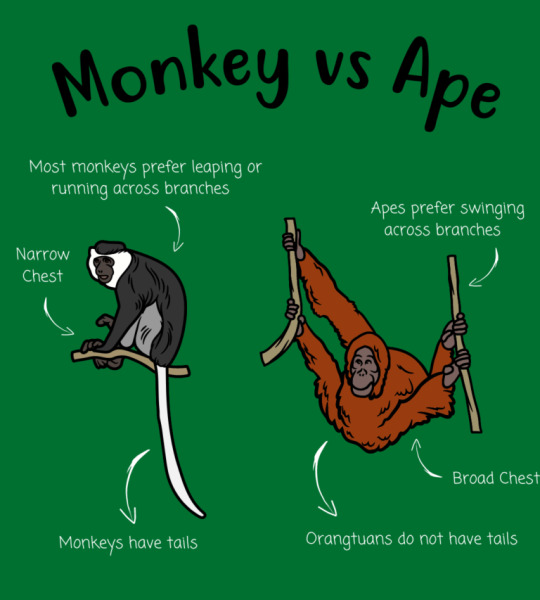
(Every time I see a graphic like this I age ten years) Movies even do this, especially when they want to sound credible. Take this scene from Rise of the Planet of the Apes:
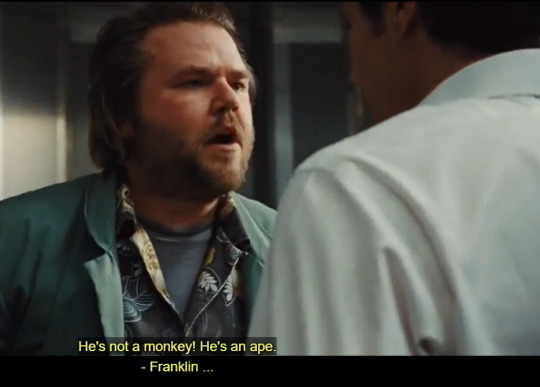
This guy Franklin is presented as the authority on apes in this scene, and he treats James Franco calling a chimpanzee a monkey like it's insulting.
But when you actually look at a primate family tree, you can see that apes are on the same branch as Old World monkeys, while New World monkeys branched off much earlier.

(I'm assuming bushbabies are included as "lorises" here?)
To put it simply, that means you and I are more closely related to a baboon than a baboon is to a capuchin.
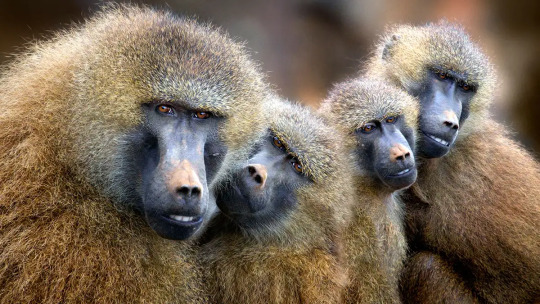
Either the definition of monkey includes apes OR we can keep using an anatomical definition and Barbary macaques get to be an ape because they're tailless.
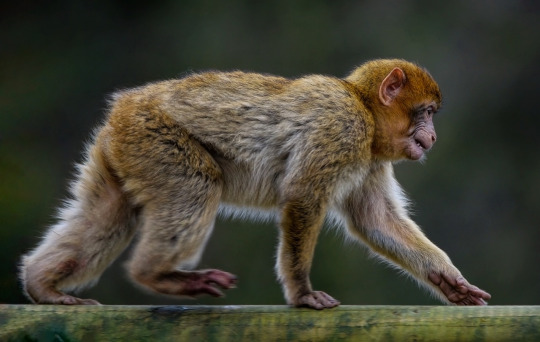
"I've got no tails on me!"
SO
Why did all this happen? Why did we start insisting apes are monkeys, especially considering the two words were pretty much interchangeable for centuries? Well I've got one word for ya...

This the attitude that puts humans on a pedestal over other life on Earth. That there are intrinsically important features of humanity, and other living things are simply stepping stones in that direction.
At the dawn of evolutionary study, anthropocentrism was enforced by using a model called evolutionary grades. And boy howdy do I hate evolutionary grades.
Basically, a grade is a way of defining a group of animals by using anatomical "complexity". It's the idea that evolution has milestones of importance that, once reached, makes an organism into a new kind of thing. You can almost think of it like evolutionary levels. An animal "levels up" once it gains a certain trait deemed "complex".
You can probably see the issue here; that complexity is an ephemeral idea defined through subjectivity, rather than based off anything truly observable. What makes walking on 2 legs more complex than walking on four? How are tails less complex than no tails? "Complexity" in this context is unmeasurable, therefore it is unscientific. That's why evolutionary grades suck and I never want to look at one.
For primates, this meant once some of them lost their tails, grew bigger brains, and started brachiating instead of leaping, they simply "leveled up" and became apes. Despite the early recognition that apes were simply a branch of the Old World monkey family tree (1785!), the idea of grades took precedent over the phylogenetic link.
In the early years of primatology, humans were even seen as a grade "above" apes, related but separated by our upright stance and supposed far greater intelligence (this was before other apes were recognized tool users).

It wasn't until the goddamn 1970s that it was recognized all great apes should be included in the clade Hominidae alongside humanity. This was a major shift in thinking, and required not just science, but the public, to recognize just how close we are to other living species. It seems like this change has, thankfully, happened and most institutions and science respecting folks have accepted this fact. Those who don't accept it tend to have a lot more issues with science than only accepting humans as apes.

And now, we come to the current problem. Why is there a persistent idea that monkeys and apes are separate?
I want to make it clear I don't believe there was a conscious movement at play here. I think there's a lot of things going on, but there isn't some anti-monkey lobby that is hiding the truth. I think the problem is more complicated and deals with how human brains and human culture often struggle to do too many changes at once.
Now, I haven't seen any studies on this topic, so everything I say going forward is based on my own experience of how people react to learning apes (and therefore, humans) are monkeys.
First off, there is a lot of mental rearranging you have to do to accept humans as monkeys. First you, gotta accept humans as apes, then you have to stop thinking in grades and look at the family tree. Then you have to accept that apes are on the Old World monkey branch, separate from the New World monkeys.
That's a lot of steps, and I've seen science-minded zoo educators struggle with that much mental rearranging. And even while they accept this to an extent, they often find it even harder to communicate these ideas to the public.
I think this is a big reason why zoos and museums often push this idea the hardest. Convincing the public humans are apes is already a challenge, teaching them that all apes are monkeys at the same time might seem impossible.
I believe the other big reason people cling to the "apes-aren't-monkeys" idea is that it still allows for that extra bit of comforting anthropocentrism. Think of it this way; anthropocentrism puts humans on a pedestal. When you learn that humans are apes, you can either remove the pedestal and place humans with other animals, OR, you can place the apes up on the pedestal with humanity. For those that have an anthropocentric worldview, it can actually be easier to "uplift" the apes than ditch the pedestal.
Too make things worse, monkeys are such a symbol of a "primitive" animal nature that many can't accept raising them to the "level" of humanity, but removing the pedestal altogether is equally painful. So they hold tight to an outdated idea despite all the evidence. This is why there's often offense taken when an ape is called a monkey. It's tantamount to someone calling you a monkey, and that's too much of a challenge to anthropocentrism.
Personally, I think recognizing myself as a monkey is wonderful. Non-ape monkeys are as "complex" as any ape. They make tools, they have dynamic social groups, they're adapted to a wide range of environments, AND they have the best hair of all primates.
I think we should be honored to be considered one of them.
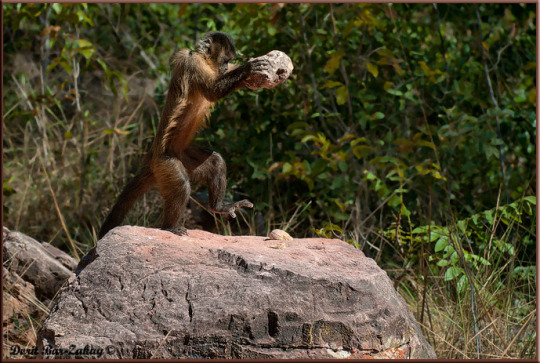
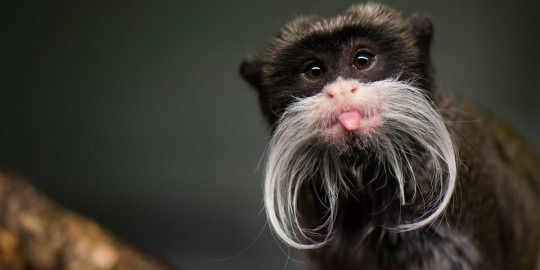

3K notes
·
View notes
Text
Gymnastics is a sport that requires athletes to be physically agile and flexible in order to perform difficult and complex routines on various apparatuses. This level of athleticism is not only limited to human gymnasts, but also to some of their closest relatives, the New World monkeys.
One characteristic that is shared between gymnasts and New World monkeys is their platyrrhine nasal structure. This refers to the broad and flattened nasal septum, along with the presence of 36 teeth, that is found in both groups. This unique feature allows for better air flow and increased oxygen intake, making it an advantageous trait for athletic performance.
But why are gymnasts, and now sasquatches, discussed in this context? It all comes down to the design of gymnastics halls.
Gymnastics halls are built with specific considerations for the safety and performance of athletes. The equipment and structures within the hall are designed to allow for maximum movement and flexibility. This includes wide spaces for leaps and jumps, high ceilings for aerial maneuvers, and most importantly, a sturdy and supportive floor for tumbling and acrobatics.
For sasquatches, or any other large ape-like creature, these same features are necessary for their own physical activities. The wide spaces and high ceilings would allow for free movement and the sturdy floor would provide a safe surface for their powerful leaps and landings.
But what does this have to do with their platyrrhine nasal structure? It all goes back to the increased oxygen intake that is made possible by this unique nasal structure. In order for sasquatches to perform at their peak, they need a consistent and sufficient supply of oxygen. The large, broad nostrils and nasal septum allow for easier and more efficient breathing, especially during physically demanding activities like gymnastics.
Furthermore, the prehensile tail found in some New World monkeys, such as spider monkeys, is also a beneficial feature for gymnasts and sasquatches. This type of tail can be wrapped around objects to provide stability and balance, which is crucial for performing on various apparatuses.
So, while it may seem strange to think about sasquatches doing gymnastics, the similarities between their physical abilities and those of gymnasts cannot be ignored. And it all comes down to their platyrrhine nasal structure and other adaptations that allow them to excel in such physically demanding activities. So next time you watch a gymnastics competition, just imagine a sasquatch swinging from the uneven bars with its broad nostrils taking in all the necessary oxygen.
0 notes